Good Cameras for Photography and Vlogging
Cameras are analogue (i.e., use a film to capture images) and digital (i.e., use a digital sensor to capture images). Each of these two categories includes several camera types based on the film’s or sensor’s size (e.g., large format, medium format, full-frame, APS-C, micro four-thirds, etc.) or the mode of use (e.g., with interchangeable lenses, bridge cameras, point-and-shoot, phone cameras, etc.). In addition, a camera may record only still images, only videos, or both. And, to complicate things even more, a camera may mix almost any of the above characteristics.
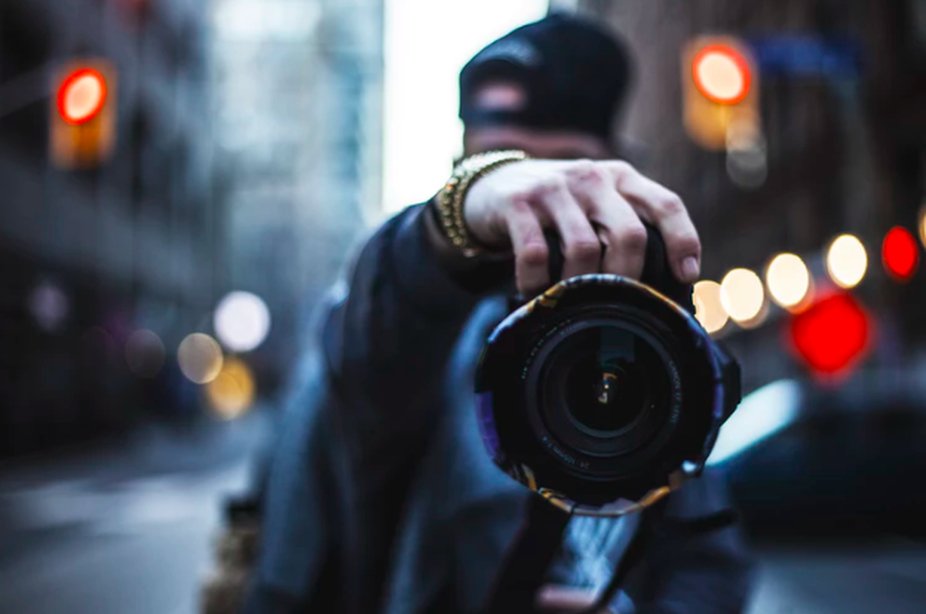
So how can you choose the best camera for photography from the huge diversity of camera models on the market? First, if you aren’t into fine art photography or artistic films, digital cameras are the best choice for you. Film cameras are more difficult to manage and require much more technical skill. Then, consider your preferred photographic genre, workflow, printing options if any, and, of course, budget. Here are our choices for the best cameras for photography and vlogging this year.
Best Cheap Camera for Photography
If your budget doesn’t cover a professional camera, the best camera for your photography is a versatile compact camera with a wide zoom range.
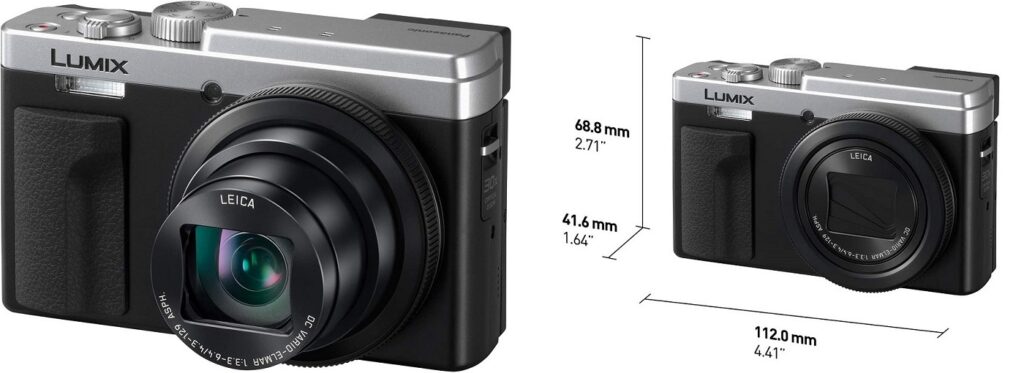
Panasonic LUMIX ZS80, for example, features a Leica lens with an impressive 24-720mm focal length range and a powerful 30x zoom, a large 20.3 MP sensor, and optical image stabilization in a pocket-size body. Designed for travelers, ZS80 has a fast focus system and creates high-quality images in any light condition. And, if you want to broadcast your experiences, you can record 4K video and use the 180-degree tiltable touch screen to take selfies.
Pros: It’s a fast camera with a wide zoom range for any situation.
Cons: It doesn’t have interchangeable lenses and manual controls.
Best Camera for Photography Beginners
If you are serious about photography but a beginner, an entry-level DSLR or mirrorless camera with a kit lens will help you find your artistic voice and choose a photographic genre.
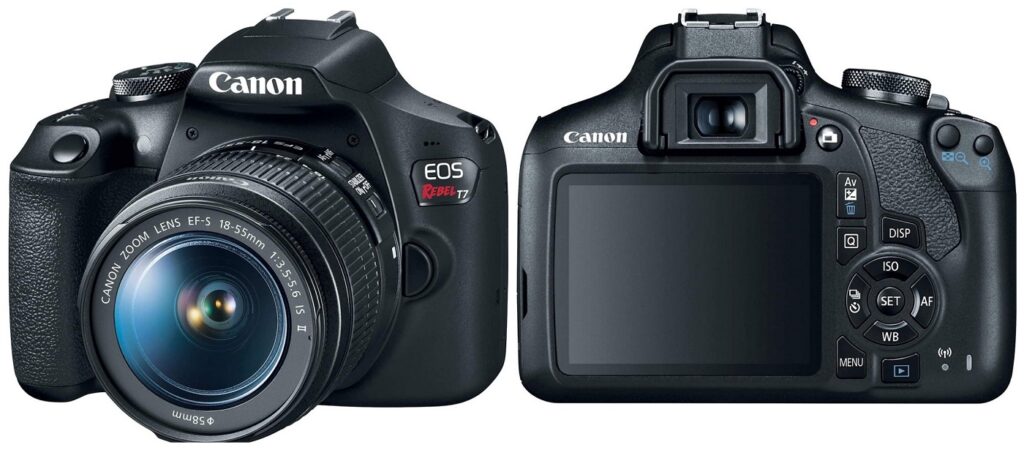
The Canon EOS Rebel T7 is an inexpensive DSLR camera featuring a 24.1MP sensor, a fast autofocus system, RAW support, and optical image stabilization. It’s lightweight and easy to use but provides both manual and automatic controls, which help you learn fast. The 18-55mm kit lens has a versatile focal length range that accommodates many photographic genres from landscapes to portraits to product photography. The Canon EOS Rebel T7 can also record full-HD videos and has built-in Wi-Fi and NFC technology for fast sharing.
Pros: It’s an affordable DSLR camera with interchangeable lenses and manual controls.
Cons: It has lower performance in low-light conditions. Continuous autofocus isn’t available for recording videos.
Best Camera for Professional Photography
Professional photographers don’t compromise on image quality and therefore, need a camera with a large sensor and high performance in any conditions.

Sony α9 II is a full-frame mirrorless camera with a large 24.2 MP sensor, wide ISO range (100 – 51200), extremely fast autofocus system with wide coverage, and 20fps continuous shooting with AF/AE tracking. It provides 4K video recording, RAW support, and wireless control. The camera is designed to be fast, reliable, and productive and targets photographers who need speed, whether it is for autofocus or shutter speed. It fits the event, sports, travel, and street photographers very well.
Pros: It’s a high-end mirrorless camera that provides speed and accuracy without compromising image quality.
Cons: The menus and overall usability may be improved.
Best Camera for Photography and Vlogging
If you mix photographs and videos, you need a camera with high performance in both departments. And you also need to ensure the camera performs in your workflow, as recoding YouTube tutorials in the studio is far different from filming action sports.
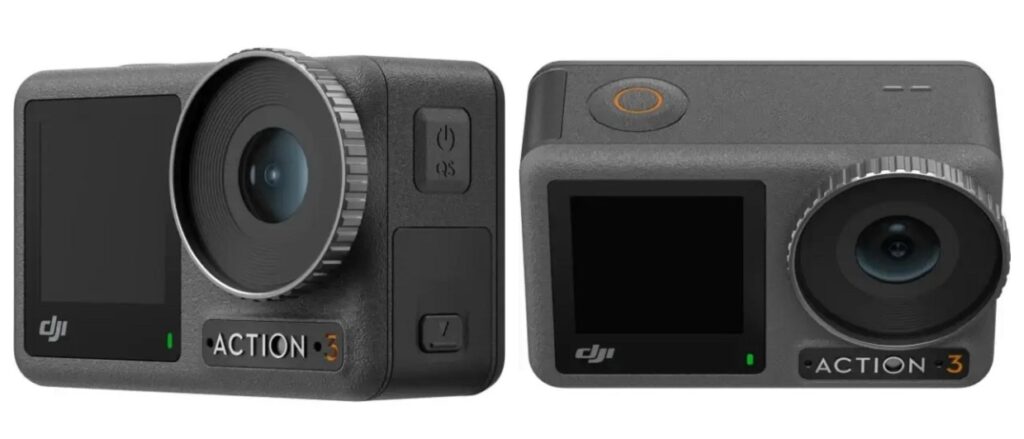
Osmo Action 3 is a small, waterproof, and versatile action camera. It has a 1/1.7-inch sensor and fixed lens with a super wide angle, but it’s all it takes for its purpose. Osmo Action 3 has vertical and horizontal mounting and goes on your bike, snowboard helmet, or surfboard. It features 4K/120fps video recording, dual touchscreens for effortless control, and 150-minute battery life.
Pros: It’s perfect for shooting action movies.
Cons: It may not be suitable for taking photographs regularly.

However, if your photographer and videographer days are calm and collected, Sony ZV-1 may be a good choice. It’s a compact camera with all the features a vlogger needs, from a large 1.0-type Exmor RS CMOS image sensor for high-image quality to a directional 3-capsule microphone to a vari-angle LCD for full flexibility. The fixed lens provides 2.7x optical zoom, a maximum aperture between f/1.8 and f/2.8, and a 24-70mm focal length range.
Pros: It’s an easy-to-use camera with all the accessories for content creation and sharing.
Cons: It has a fixed lens and lower image quality than high-end professional cameras.
Best Camera for Wildlife Photography
Wildlife photographers need a reliable camera able to create high-quality photographs, work fast and silently, and support a wide variety of telephoto lenses.
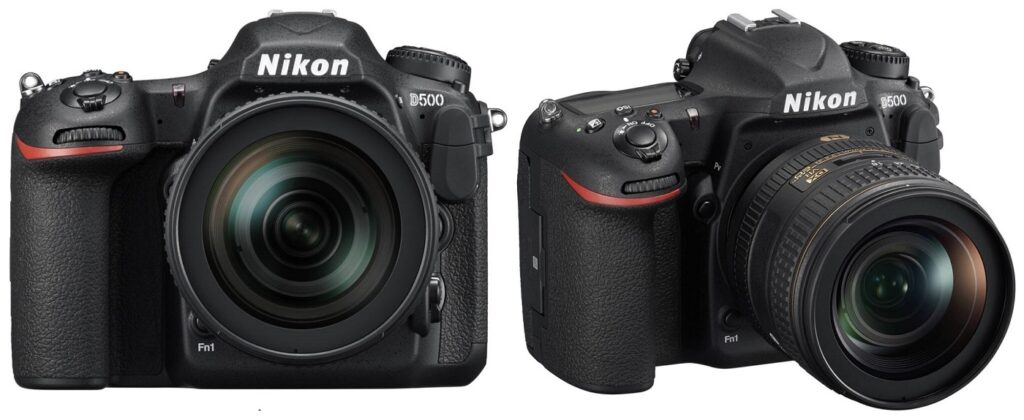
For them, the Nikon D500 camera with the telephoto zoom lens AF-S NIKKOR 200-500mm f/5.6E ED VR is a good combo. Nikon D500 is a DSLR camera with a 20.9MP sensor, a wide dynamic range (ISO 100 – 51,200), a fast and silent autofocus system, and 4K video recording. The lens features a constant f/5.6 maximum aperture throughout the focal range, vibration reduction image stabilization, optical design for minimizing chromatic aberrations, and Nikon’s Silent Wave Motor (SWM).
Pros: Nikon D500 is robust, lightweight, and silent; a reliable camera for wildlife photography.
Cons: Lower image quality at high ISO values and reduced autofocus performance for video recording.
Best Camera for Landscape Photography
If you are into landscape photography, you need a portable and lightweight camera, easy to use, and resistant to weather, dust, and water.

Nikon D5600 may be the best camera for your photography. It’s a DLSR entry-level camera with a generous 24.2MP sensor, a broad dynamic range (ISO 100 – 25,600), manual focus and autofocus, built-in HDR, and sharing functionality. Being a Nikon camera, D5600 provides access to a wide variety of lenses. And although landscape photographers prefer wide-angle lenses, you may want to try a telephoto lens to capture the details of the landscape.
Pros: It offers a high-resolution sensor and broad ISO range at an affordable price.
Cons: It could use a better grip and improved autofocus for movies.
Best Camera for Cars Photography
To photograph cars you need a fast camera and lens setup, able to freeze motion and create sharp images. At the same time, you need a high-performance camera to create commercial content featured on profile magazines and websites.
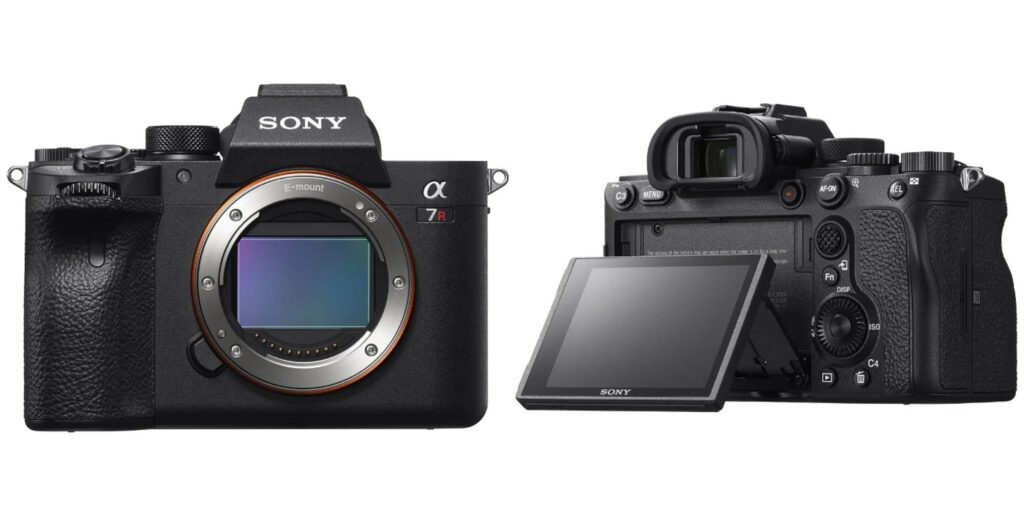
Sony α7R IV is a full-frame mirrorless camera featuring the world’s first 61MP sensor. You can’t get better quality than that. It offers 10fps continuous shooting, a fast autofocus system with real-time tracking , and a wide dynamic range for capturing the best shots with cars in action. The shutter speed range is also impressive. The α7R IV lets you set a 1/8000 sec shutter speed.
Pros: It provides unbeatable image quality and a fast setup for photographing subjects in motion.
Cons: It’s expensive.
Best Camera for Wedding Photography
What do you need from a camera to photograph a wedding? Everything. The best camera for wedding photography is portable, reliable, and has a good grip. It creates beautiful images ready for print in any light condition. And it’s also versatile because a wedding photographer goes from wide angles to portraits to close-ups to photographing moving subjects in seconds.

Canon EOS R6 is a camera many wedding photographers use. It’s a full-frame mirrorless camera, meaning it is light and creates high-quality images (20MP sensor). To tackle unpredictable lighting conditions, the camera offers a wide dynamic range (ISO 100 – 102,400, expandable to 204,800). And for capturing fast moments, it provides high-speed continuous shooting of up to 12 fps, a fast autofocus system with people and animal recognition and tracking, and 4K video. Being a Canon camera means it provides access to a broad diversity of good lenses.
Pros: It uses deep learning to provide fast and accurate subject detection and tracking.
Cons: Fewer video features than other Canon camera models.
Best Camera for Real Estate Photography
Real estate photography means taking amazing photos of interiors regardless of lighting conditions and available space. Therefore, you need a camera with high performance in low light conditions and a wide-angle lens.
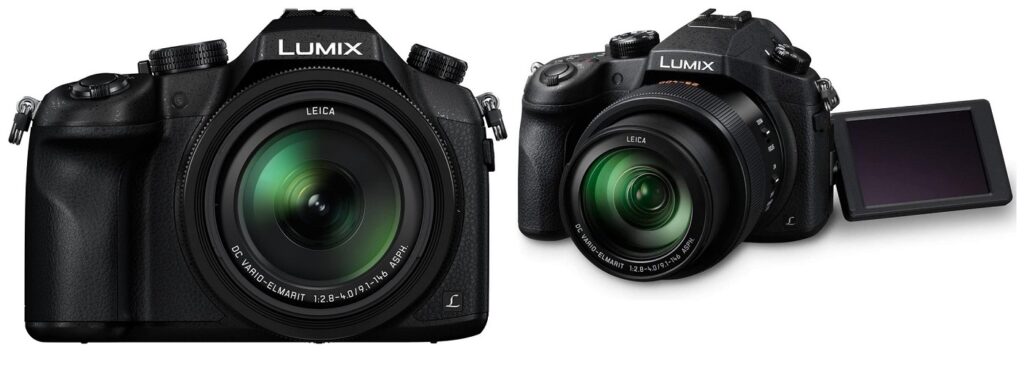
Panasonic LUMIX DMC-FZ1000 features a fixed 24-400mm f/2.8-4.0 Leica lens with a 16x optical zoom and image stabilization. The optical design of the lens minimizes chromatic aberrations and distortions. It’s a compact camera that requires almost no learning curve and produces professional-looking images. The 20.1MP sensor ensures commercial quality, and the broad dynamic range (ISO 100 – 25,600) lets you take sharp photographs of any space. The camera supports remote shooting and instant sharing.
Pros: It creates sharp photographs with minimum effort.
Cons: It doesn’t allow the use of a different lens, such as an ultra-wide-angle or panoramic lens.
Best Camera for Product Photography
There is no place for errors in product photography. The acerb competition requires high-quality images, ultra sharp and clear, with the best exposure, and print resolutions. The best camera has to focus on image quality.
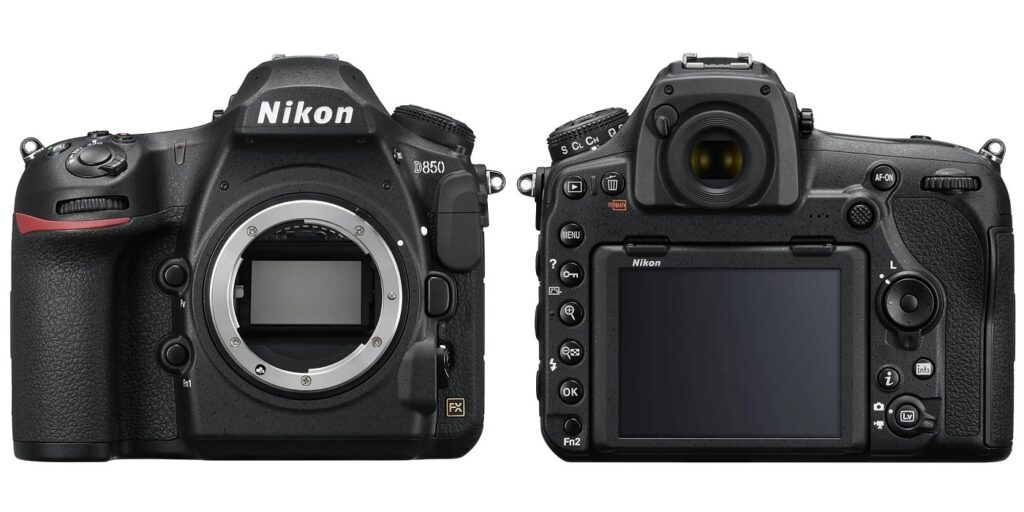
Nikon D850 is a high-end full-frame DSLR camera with an impressive 45.7MP sensor, a broad dynamic range (ISO 64 – 25, 600), and a precise autofocus system. It features 4K and 8K time-lapse and 12 fps slow motion for all the creative effects you can think of. The camera also provides Speedlight control for managing external flash units, focus shift capabilities, and access to the finest NIKKOR lenses.
Pros: It is a full-frame 45.7MP camera providing image quality few can compete with.
Cons: It’s expensive and not all features work equally well for photographs and videos.
Frequently Asked Questions
A: The best camera for photography is the one that checks all your boxes. If you are a professional photographer, you want the highest image quality, a broad selection of lenses, and a body that fits your workflow. If you are a beginner, you want an affordable and versatile camera that helps you learn and practice as many photo setups as possible. If you are a vlogger, video capabilities are essential. You want high-quality video recordings, sharing functionalities, and options for shooting in various video setups. So, the best camera isn’t always the latest model on the market or the one with the best reviews. It’s the one that inspires you to create better content.
A: All camera types have pros and cons. It’s not a question of which one is the best, but of which one fits you best. Analogue cameras create a particular look and target photographers who enjoy capturing the moment instead of taking the same photo again and again until it looks good. They work better with fine art photography.
Digital cameras are versatile and much more easy to use. They help you learn faster and come with a long list of accessories you can work with. If you commit to photography, you may want a high-end camera that lets you set up each parameter and produces print-quality images. Most commercial photographers use full-frame or medium-format digital cameras.
A: Look for the best image quality you can afford but also consider your workflow. Do you take photographs outdoors in unpredictable conditions? Look for a weather and dirt-resistant camera. Do you take photos in a studio? A heavier and bulkier camera may not stay in your way. Do you need an extreme lens option, such as a fish eye lens? Look for cameras that support a broad selection of lenses so you have where to choose from. Make a list of your requirements and prioritize them.
Also, don’t compromise on built quality. Try to buy the latest camera model you can afford to make sure you will use it for a long time. It’s important to have a camera you are comfortable with (e.g., it is light enough, it provides a good grip for your hands, you learn fast how to use all its features, etc.).
A: An expensive camera won’t make you a better photographer overnight. Some of the greatest photographers used one camera and one lens all their lives and produces amazing work. Photojournalists, for example, usually go for a compact and mirrorless camera that allows them to photograph unnoticed.
However, expensive cameras are expensive because of a reason. And the reason is they provide higher image quality, better performance in low-light conditions, the possibility of using more than one lens, and better built quality. They give you full control over the photography process and help you when and if you need. A compact camera has fewer or no manual controls, which limits your artistic possibilities.
So, if you are a beginner and not sure about your commitment, start with any camera you have. Learn composition techniques and basic technical skills (e.g., know what aperture, shutter speed, and ISO are). And then see what limitations the camera imposes and what gear you need to bring to life your inspiration.

